SOUTH PORTLAND — On a hill overlooking the fields behind Memorial Middle School, Juned Dhamdachhawala sits on the edge of a raised garden bed and surveys the scene below where 15 men are playing cricket on what once was a baseball field.
His brother Javed is down there, taking a turn as one of the bowlers, the cricket equivalent of a baseball pitcher. Their father, Ibrahim, who immigrated to Maine two decades ago, is watching from a bench on the hill. Three of his granddaughters flit in and about, sometimes playing with a cricket bat and ball.

Chakravarthy Marx, left, and Vinay Pathak pound the stumps into the pitch before the Jaguars face Idexx. Pathak is captain of the Jaguars, one of four teams in the Maine Cricket League.
“You can see every year the new faces, but everybody likes cricket,” said Dhamdachhawala, 39, of South Portland. “First they come for the job, and second they find out where they’re playing the cricket.”
Because of the H-1B visa program, there is a steady flow of young men born in India working high-tech jobs in Maine. In their free time, they play the sport of their youth in the little-known Maine Cricket League.
Cricket is the national pastime in India, a country of 1.4 billion. And interest in cricket is growing in the United States. In New York City, it’s an official high school sport. ESPN regularly streams Indian Premier League matches online. USA Cricket, the governing body for cricket in America, was formed in 2017 to help develop the sport at all levels.
From 2000 to 2015, the Indian immigrant population more than doubled in the U.S., from 1 million to 2.4 million, according to the Migration Policy Institute. In 2016, Indians were the top recipients of H-1B temporary visas, administered through a program that allows U.S. employers to hire foreign workers to fill gaps in fields such as information technology.
“We have a pretty good number of Indian folks here,” said Vinay Pathak, who works at Unum Group and organizes the Maine Cricket League. “We have people on visas. Some people are citizens as well.”
Pathak, 29, lives in South Portland and wields a mighty cricket bat. As captain of the Jaguars – one of four teams in the league – Pathak was largely responsible for two victories last week, over the Avengers by 16 runs with a score of 131 and over Idexx by 30 runs with a score of 124.
“In India, people play pretty much every single day,” said Niral Patel, 31, a convenience-store owner from Lyman who immigrated to Maine when he was 18. “When the India (National) Cricket Team plays, pretty much everything stops. The entire country, they just watch cricket.”

Gautham Karanam of the Avengers bats against the Jaguars in their match on July 10.
LOCAL CRICKET A ‘PLEASANT SURPRISE’
For the past eight years, the place to find cricket in these parts has been a former baseball field off Wescott Street in South Portland, where the Maine Cricket League holds court five days a week from late June through July.
Abdhi Sharma, 26, of South Portland came to Maine from India last year to work as a consultant at Unum.
“I had been to New Jersey a couple of times,” he said. “I know they have a good Indian population so I expected (cricket) to be there. I wasn’t expecting it to be here. It’s a very pleasant surprise.”
Unlike baseball, in which teams trade turns at bat and in the field for multiple innings, cricket involves only one transition between offense and defense. Locally, this means each team bats for roughly an hour, with 10 batsman continuing until being put out or until the fielding team exhausts all 16 overs (defined as six legal deliveries by a single bowler).
In baseball, the pitcher throws from a mound and the ball sails directly to the bat. In cricket, the bowler takes a running approach, throws with a straight-elbow motion and the ball bounces before reaching the batter. The object of the game – as in baseball – is to score runs when batting and to prevent them while in the field.
Most of the action takes place on a rectangular strip of dirt 22 yards long and 10 feet wide, called the pitch. At each end of the pitch, three stakes (called stumps) are pounded into the ground to form a wicket. Over the 3-inch gap between the stumps rest a pair of carved sticks called bails. If the bails drop, everyone knows the wicket has been struck by a ball.
The playing field extends in an elliptical shape roughly 60 meters in each direction from the pitch. Reddish-orange flags atop short wire poles serve as outer boundaries. Fly balls that land beyond the boundary count for six runs. Balls that bounce or roll past the flags are worth four runs.
INDIA, CARIBBEAN REPRESENTED
On any other batted ball that isn’t caught before it hits the ground, the two batsmen (striker and non-striker) can scurry to the opposite wicket to score a run. They don’t actually have to touch the wicket, simply reach the rectangular crease in front of it.

Niral Patel, who owns a convenience store in Lyman and plays for the Jaguars, triumphantly holds up the ball after making a diving catch against the Avengers. The ball used by the Maine Cricket League resembles a worn-down tennis ball, but with substantially more heft.
The ball used by the Maine Cricket League resembles a worn-down tennis ball, only the ball has substantially more heft. International cricket uses a harder ball that requires the use of protective equipment for those batting. Except for the wicket keeper (equivalent to a baseball catcher), fielders in Maine do not wear gloves.
Rosters of the four Maine Cricket League teams – Jaguars, Avengers, Idexx and Augusta – list 62 names, all but two of which appear to be Indian. The outliers hail from the Caribbean.
One is Leroy Rowe, 37, a faculty member at the University of Southern Maine, where he teaches African-American history and politics. He grew up in Jamaica at a time when the West Indies dominated World Cup cricket competition, so he naturally gravitated to the sport.
He spent his senior year of high school in New Jersey in 1997 and played soccer and ran track. Since moving to Maine in 2012 after attending graduate school in Missouri, he has played cricket in South Portland. The only other non-Indian players in the Maine Cricket League that he can recall are two American-born players who learned cricket while in college.
“Now and then you have some school-age kids who want to play with us,” Rowe said. “They want to learn. At least, they want to pitch the ball, they say. We show them how to bowl and how to bat, and get a laugh out of that.”

Avengers teammates cheer their team on during their cricket match against the Jaguars on July 10 in South Portland.
‘PLAYING HERE FOR ALMOST 10 YEARS’
As for cricket’s appeal, Rowe said there’s always intrigue, a dropped ball from a normally sure-handed fielder, a surprising pop-up that retires a dangerous batsman on one of his first swings.
“Whenever you assume that something is predictable or is going to happen a certain away, there’s always a shift in the game that you can’t account for,” Rowe said. “Usually, it’s the only time you’ll see 11 guys who all have unique individual skills all working in unison. At any moment, any one of them could have an impact on the game. Even the longer format of the game, which is five days – test matches – they are popular and people follow it simply because of those subtle moments when something quick happens that just transforms the game.”
The age range for the men in the Maine Cricket League is roughly 22 to 40. Women play cricket as well, and have been doing so at the World Cup level since 1973 (two years before the first men’s World Cup). The U.S. has a national team, but has never qualified for the World Cup.
“As long as you’re fit, you can play,” Patel said. “As long as you can run, bend, throw the ball, you can play.”

A selection of cricket bats remains on the pitch after a match. The Maine Cricket League holds its games on Wescott Street in South Portland five days a week from late June through July.
At its height, the Maine Cricket League fielded seven teams. Shifts in information technology departments by local companies account for the rise and fall of contract-based employees who grew up with cricket in India. The league’s championship match is set for Saturday at 3 p.m.
Worldwide, cricket is the world’s second-most popular spectator sport, with an estimated 2.5 billion followers (soccer has a following of 4 billion).
Still, few have taken notice of the matches behind Memorial Middle School. Spectators are welcome and admission is free.
“A lot of people haven’t noticed,” Patel said, “but we’ve been playing here for almost 10 years.”
Glenn Jordan can be contacted at 791-6425 or at:
Twitter: GlennJordanPPH
Send questions/comments to the editors.


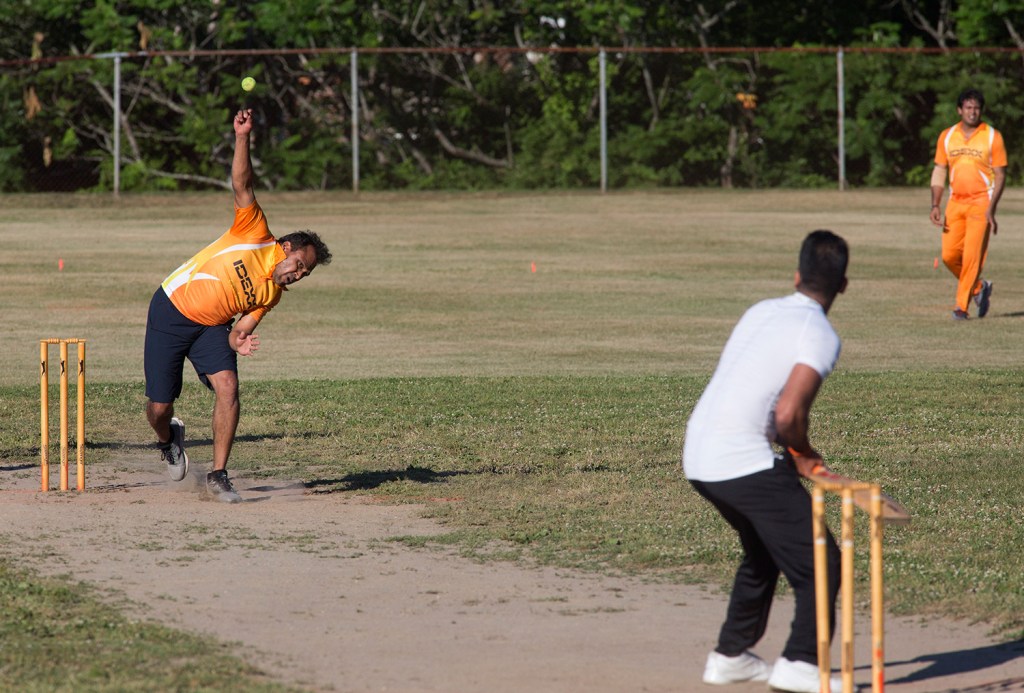
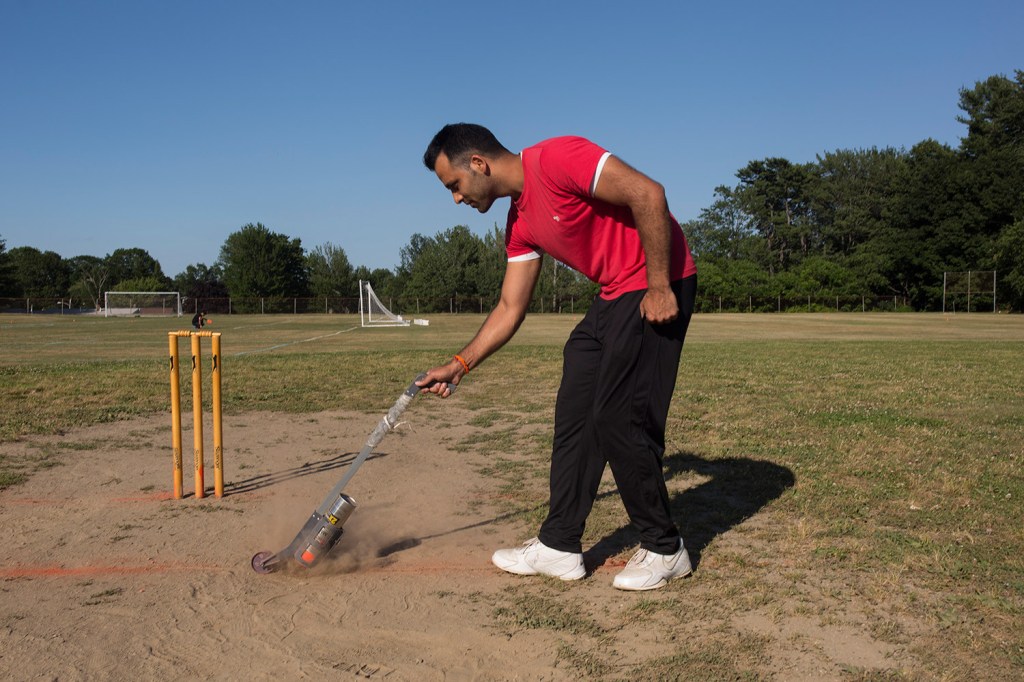
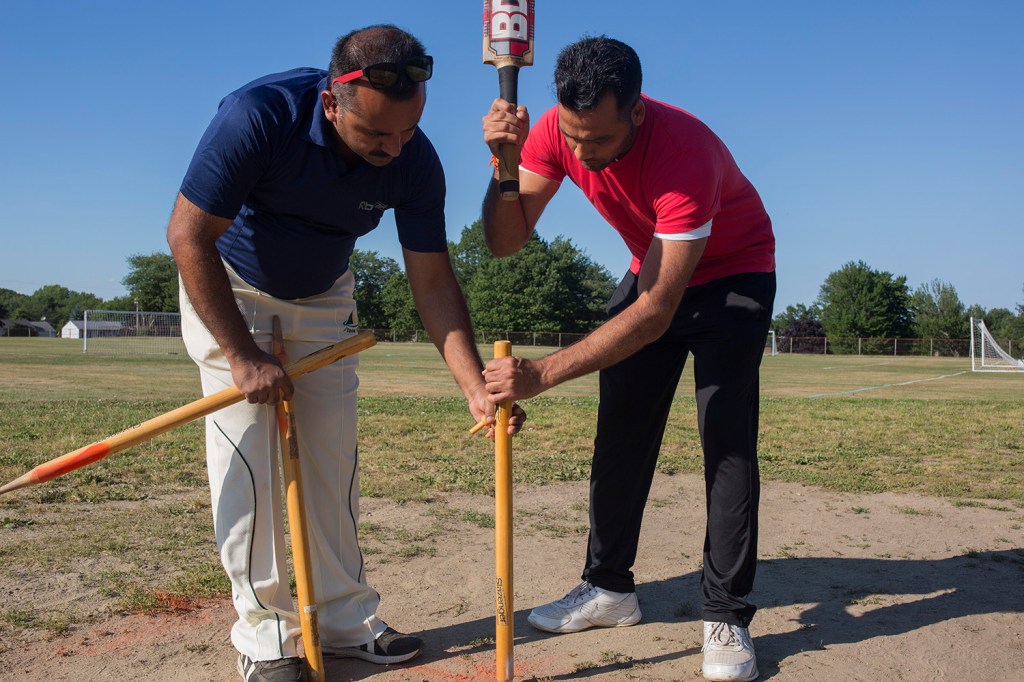
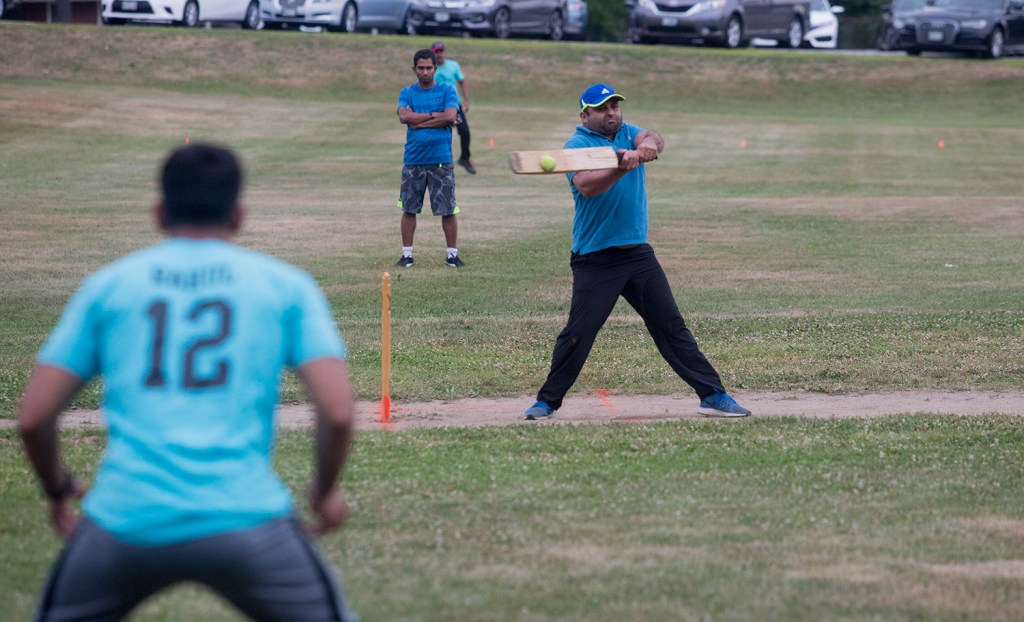
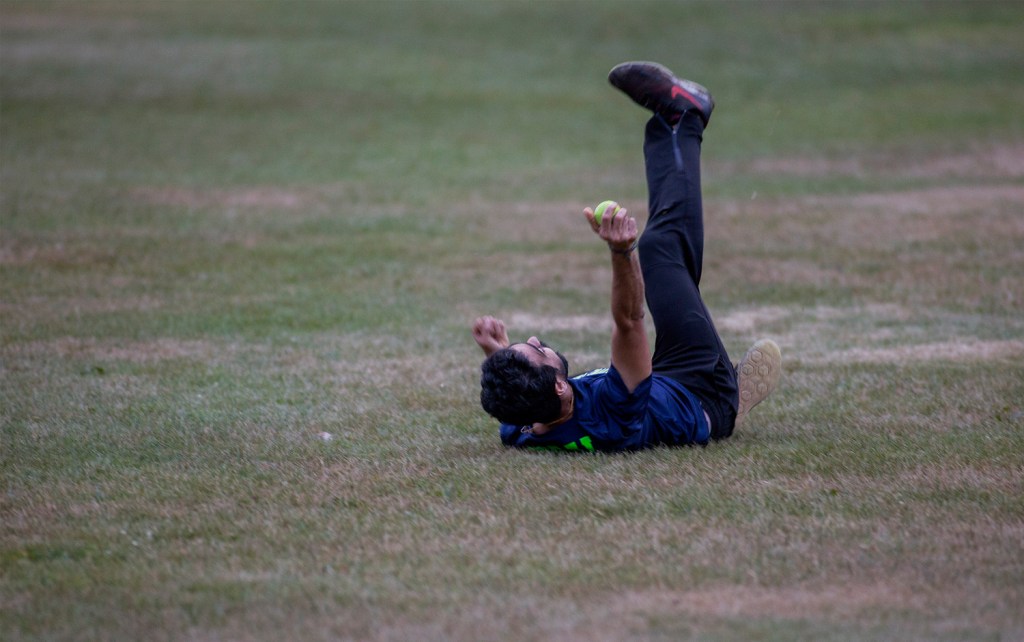
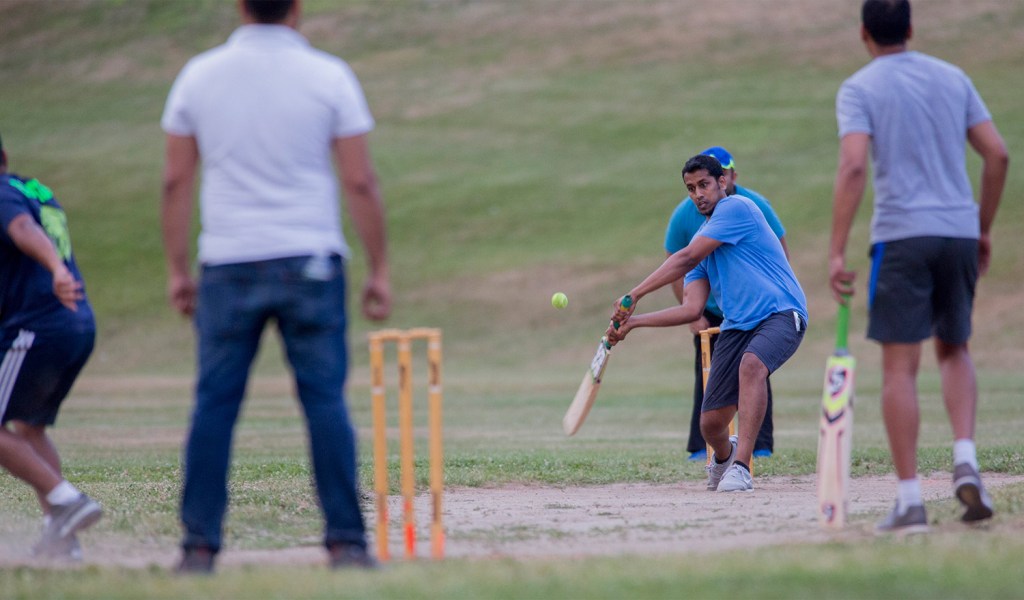
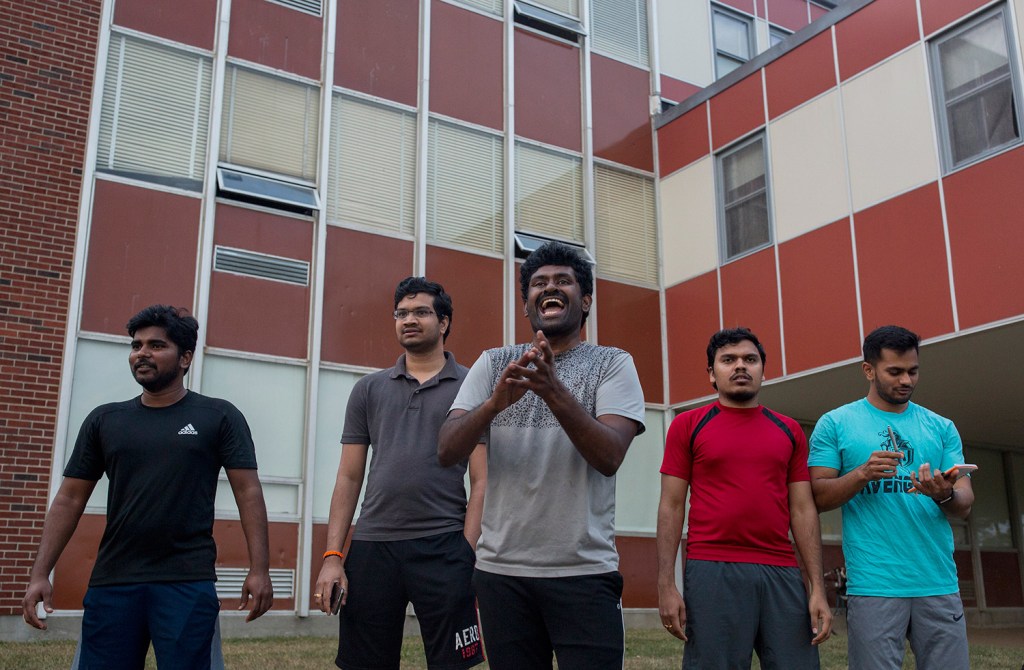
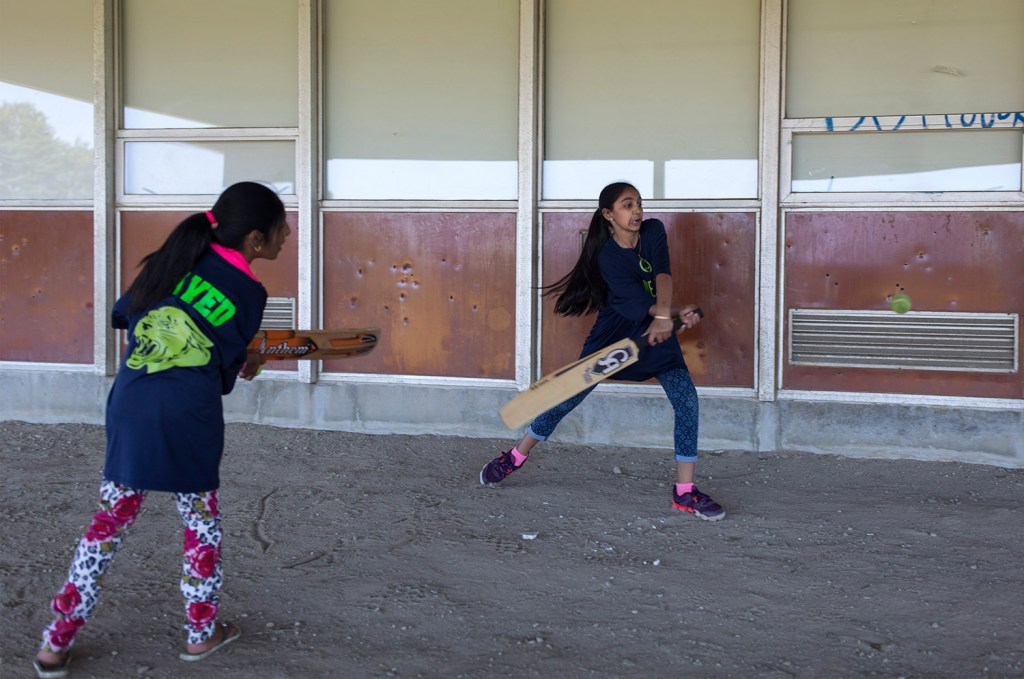
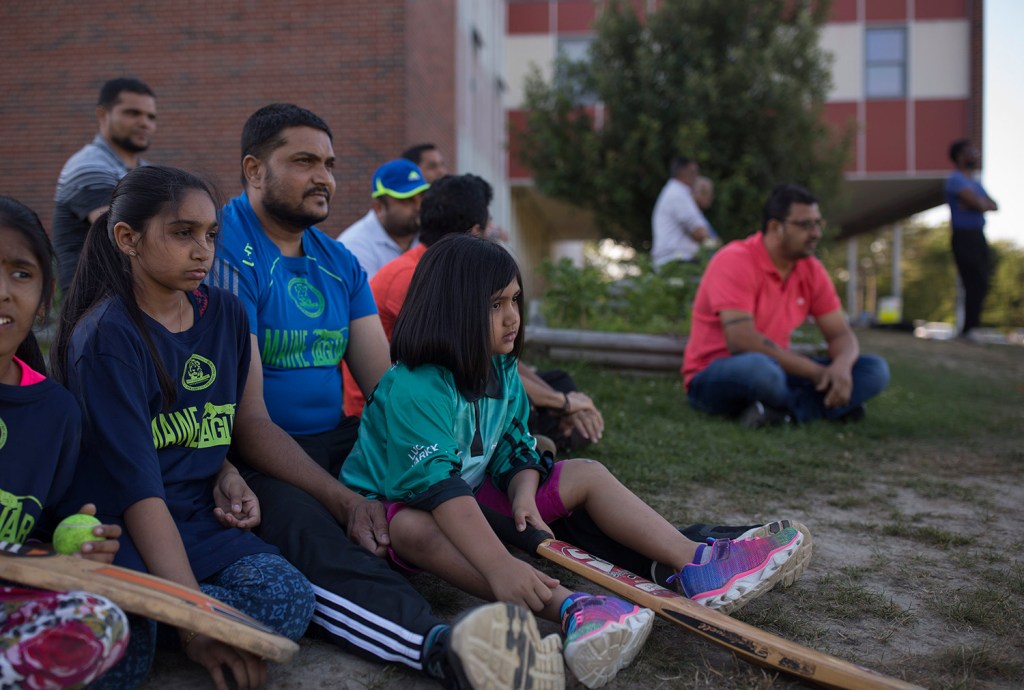
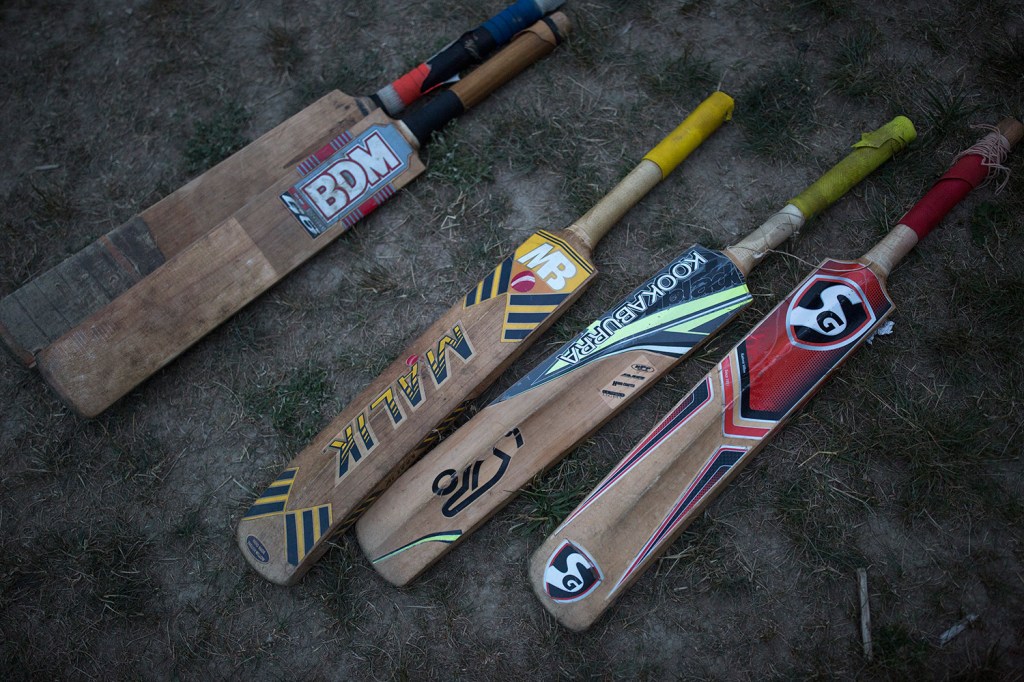

Success. Please wait for the page to reload. If the page does not reload within 5 seconds, please refresh the page.
Enter your email and password to access comments.
Hi, to comment on stories you must . This profile is in addition to your subscription and website login.
Already have a commenting profile? .
Invalid username/password.
Please check your email to confirm and complete your registration.
Only subscribers are eligible to post comments. Please subscribe or login first for digital access. Here’s why.
Use the form below to reset your password. When you've submitted your account email, we will send an email with a reset code.